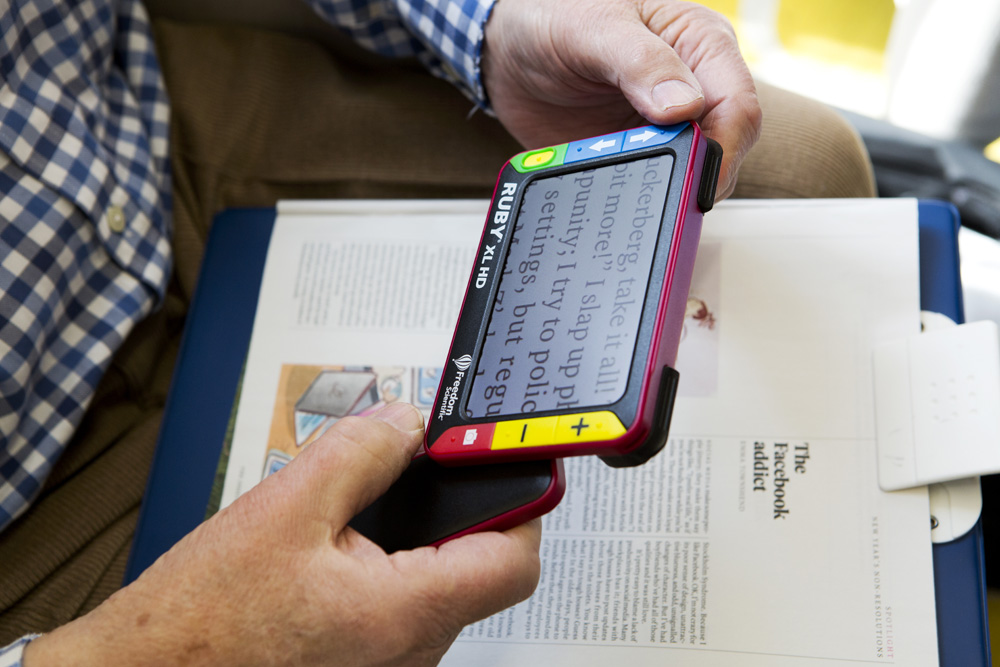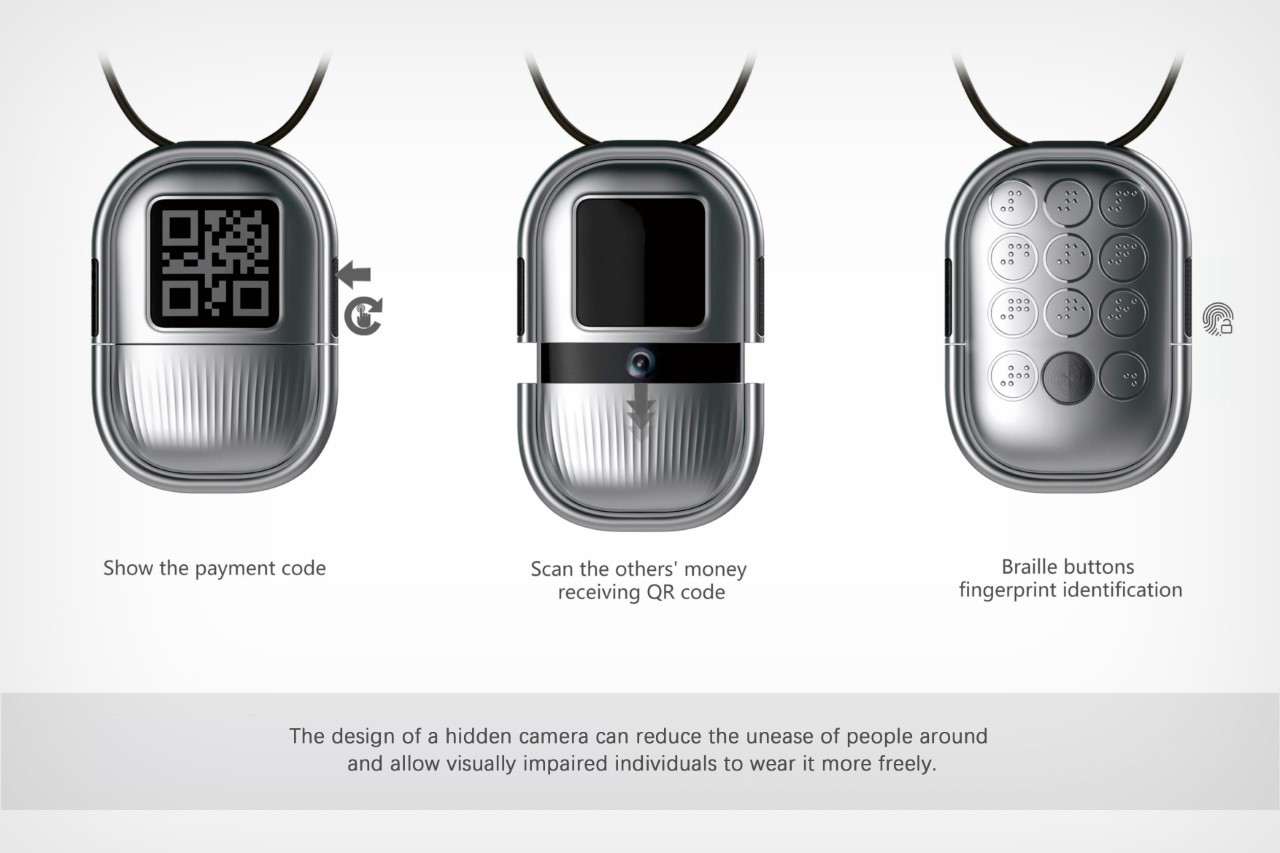Enhance Accessibility with Braille Tools and Notetakers
Enhance Accessibility with Braille Tools and Notetakers
Blog Article
An Overview to Life-Changing Assistive Innovation for the Blind and Aesthetically Damaged
The innovation of assistive modern technology has ushered in a transformative era for people who are blind or visually damaged, offering devices that boost freedom and enhance daily experiences. Technologies such as clever navigating devices and AI-driven applications are redefining just how individuals communicate with their surroundings, while accessible analysis solutions and clever home modern technologies assure to further elevate the top quality of life.
Smart Navigation Equipment
Smart navigating devices are revolutionizing the way individuals that are blind or aesthetically damaged connect with their setting. These advanced innovations, which integrate general practitioners, audio comments, and haptic signals, give customers with critical information about their surroundings, enhancing their independence and wheelchair.
One famous example is the use of clever walking canes outfitted with sensors that discover challenges and supply real-time comments through vibrations or audio cues. These devices permit customers to browse complex environments, such as busy streets or crowded public spaces, with enhanced confidence. In addition, wearable devices, such as smart glasses, are being developed to help in identifying faces, reading text, and recognizing items, further boosting the individual's spatial recognition.
Additionally, wise navigating devices are progressively including man-made intelligence to examine data and adapt to individuals' choices. This tailored method not only improves navigating performance yet also fosters a sense of empowerment among individuals. As modern technology remains to development, the potential for clever navigating devices to create a more easily accessible and inclusive world for individuals who are aesthetically damaged or blind stays encouraging, eventually reshaping their daily experiences and communications.
Innovative Mobile Apps
Mobile applications are emerging as effective tools for aiding individuals that are blind or aesthetically impaired, offering a variety of capabilities that improve daily living. These applications harness advanced technology to promote day-to-day tasks, improve ease of access, and promote self-reliance.
One classification of cutting-edge mobile apps concentrates on aesthetic acknowledgment. Applications like Be My Eyes attach customers with sighted volunteers using video clip calls, making it possible for real-time help for tasks such as reading labels or navigating unknown environments. Applications like Seeing AI make use of man-made intelligence to describe environments, reviewed message, and identify objects, offering users with vital details at their fingertips.
One more considerable area is navigation and orientation. Applications such as Aira and Neighboring Explorer supply audio advice, helping individuals browse metropolitan areas with simplicity. They supply individualized help, enabling a much more positive exploration of the environment.
Furthermore, health and wellness and wellness apps deal with particular needs, such as drug management and health and fitness tracking. These applications aim to foster a holistic method to health, guaranteeing that users can maintain their health and wellness independently.
Wearable Assistive Instruments
Wearable assistive gadgets represent a considerable improvement in technology created to sustain individuals that are aesthetically impaired or blind. These tools enhance wheelchair and self-reliance by offering real-time responses about the surrounding setting. Among one of the most notable wearable innovations are clever glasses geared up with sensing units and cams, which can recognize obstacles and relay vital details through sound cues.

An additional innovative choice consists of wrist-worn tools that utilize ultrasonic waves to spot barriers and provide navigational support. These devices frequently feature personalized settings, allowing users to customize the notifies to their specific requirements.
The combination of fabricated contact lens test knowledge in wearable assistive innovation is likewise significant, as it continually improves the accuracy and responsiveness of these devices. In general, wearable assistive tools are changing the lives of the blind and aesthetically damaged, fostering higher autonomy and boosting lifestyle with innovative options.
Easily Accessible Checking Out Solutions
Easily accessible reading remedies play a critical role in making it possible for individuals who are visually impaired or blind to involve with message across various formats. why not try these out These options encompass a series of devices and technologies created to boost reading experiences, from typical print materials to electronic content.
One prominent remedy is Optical Character Recognition (OPTICAL CHARACTER RECOGNITION) modern technology, which transforms published message right into electronic format, allowing customers to pay attention to or read the content using display readers. Additionally, specialized e-readers furnished with text-to-speech capabilities offer customizable reading experiences, enabling customers to change font dimensions and background colors for improved exposure.
Another efficient method is braille display screens, which give tactile comments by transforming electronic text into braille. This allows people to go through touch, promoting better independence and access to literary works. Mobile applications made for reviewing scanned publications or documents can empower individuals with instantaneous accessibility to a vast collection of materials (Assistive technology for the blind).

Smart Home Technologies
Smart home modern technologies have revolutionized the method individuals that are visually impaired or blind interact with their living atmospheres, improving both independence and safety and security. These ingenious solutions take advantage of automation and connectivity to create an obtainable living room tailored to the needs of users.
Smart speakers and voice-activated assistants give hands-free control over different devices, enabling customers to adjust security, temperature, and lights procedures with simple voice commands. This capability decreases dependence on sighted aid and cultivates a feeling of autonomy. In addition, wise illumination systems can be tailored to deliver acoustic responses or responsive hints, enabling people to navigate their homes better.
Moreover, safety systems geared up with smart video cameras and sensing units can send out real-time alerts to users, boosting individual security without requiring aesthetic verification. Automated door locks provide assurance, allowing users to safeguard their homes effortlessly.
Incorporating wise home innovations not just improves everyday living but additionally urges social interaction with linked tools - Voice-activated assistive devices. With recurring developments in assistive innovation, the future shows up encouraging, as even more remedies will certainly arise to more empower people that are visually damaged or blind, guaranteeing a more independent and inclusive lifestyle
Conclusion
In final thought, the advancements in assistive technology for the blind and visually damaged represent a significant jump toward boosting freedom and lifestyle. Smart navigation tools, innovative mobile applications, wearable tools, obtainable analysis solutions, and smart home technologies collectively foster an inclusive setting. This combination of Resources technology not just enhances mobility and daily living yet likewise equips individuals to engage completely with their surroundings, advertising higher autonomy and engagement in society.
Innovations such as clever navigating devices and AI-driven applications are redefining just how individuals interact with their environments, while obtainable analysis services and clever home innovations promise to more elevate the top quality of life. As technology proceeds to advancement, the possibility for wise navigation devices to produce a much more available and comprehensive world for individuals that are blind or aesthetically impaired stays promising, eventually improving their daily experiences and communications.
Wearable assistive tools represent a substantial advancement in innovation designed to support individuals who are visually impaired or blind. Amongst the most noteworthy wearable modern technologies are wise glasses equipped with video cameras and sensing units, which can determine obstacles and relay critical info through audio hints.
Smart navigating devices, ingenious mobile applications, wearable devices, obtainable reading services, and wise home innovations collectively promote an inclusive setting.
Report this page